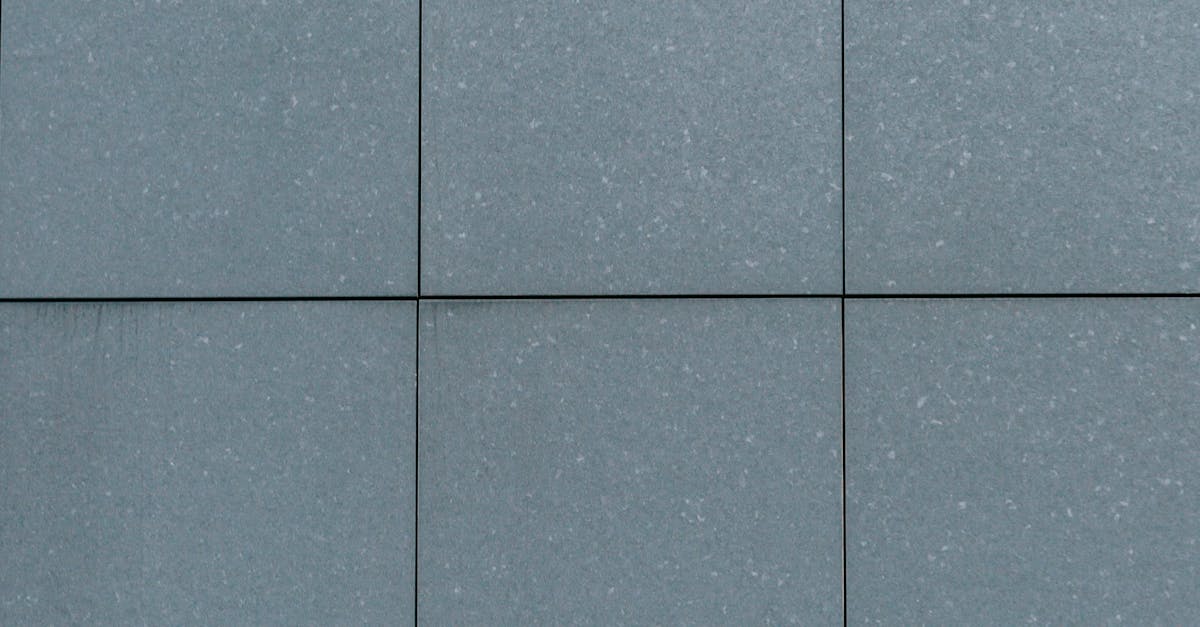
eaning solution, allowing it to absorb the liquid without oversaturating. Starting at one end of the grout line, work the brush back and forth, applying firm pressure to lift dirt and stains. Rinse the brush frequently to prevent the spread of grime. Once you have cleaned an area, wipe away excess moisture and residue with a clean cloth, making sure to periodically change the water in the bucket as it becomes dirty.
Preventative Measures for Grout Maintenance
To maintain the integrity of grout lines in natural stone installations, routine upkeep is essential. Regularly sweeping or vacuuming the floor helps eliminate debris that can lead to staining and discolouration over time. Additionally, employing a gentle cleanser designed for natural stone can assist in keeping surfaces clean without causing damage. Avoiding harsh chemicals can ensure the longevity of the grout and the stone itself.
Another effective measure involves sealing grout lines after installation. Using a high-quality grout sealer creates a protective barrier that repels moisture and stains. Typically, a sealant should be reapplied every one to three years, depending on the foot traffic in the area. This proactive approach not only enhances the appearance of the grout but also simplifies future cleaning efforts and minimizes the risk of permanent damage.
Sealing Grout to Avoid Future Stains
Applying a high-quality sealant to grout lines significantly enhances their resistance to stains and moisture. This protective layer acts as a barrier, preventing dirt, oils, and other substances from penetrating the porous surface of the grout. Regular sealing keeps the grout looking fresh and clean, reducing the frequency and intensity of cleaning required. It is advisable to reapply the sealant every six to twelve months, depending on the wear and tear the surface experiences.
Before sealing, ensuring that the grout is completely clean and dry is essential for optimal adhesion. A thorough cleaning session removes any existing stains and contaminants, allowing the sealant to bond effectively. After applying the sealant, it's important to follow the manufacturer's instructions regarding curing time to ensure the best results. With proper sealing techniques, the longevity of your grout lines can be greatly increased, maintaining the aesthetic appeal of your natural stone installations.
Regular Cleaning Schedule for Grout
Establishing a regular cleaning schedule for grout lines is essential in maintaining the appearance and integrity of natural stone installations. Depending on the foot traffic in the area, daily or weekly cleanings may be necessary to prevent dirt and grime build-up. High-traffic areas benefit from more frequent attention, while less-used spaces may require less frequent cleaning. Incorporating routine maintenance can improve the longevity of the grout and minimise the risk of stains.Cost Considerations for Limestone Wall Cladding
In addition to scheduled cleanings, it is advisable to stay vigilant about specific spills or stains. Immediate attention to any discolouration can prevent more extensive damage and uphold the overall look of the stonework. Consider setting reminders for your cleaning sessions to ensure consistency. Engaging in this proactive approach can simplify the upkeep process and help maintain a fresh and inviting space for years to come.